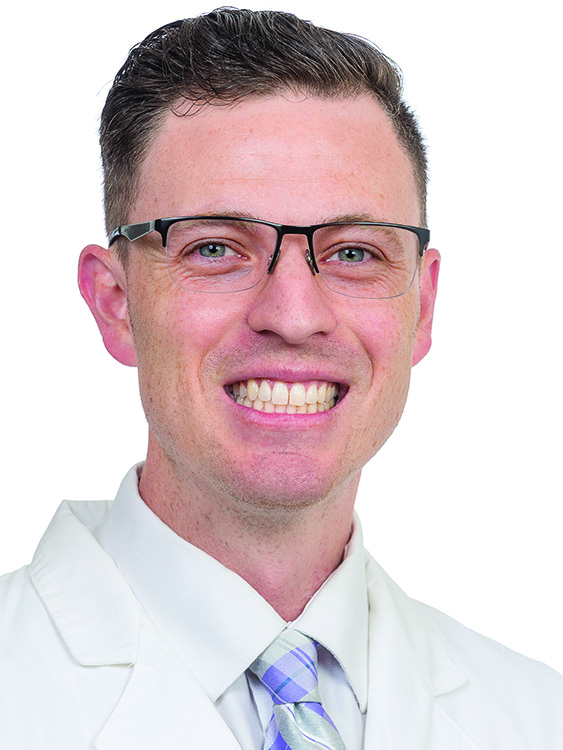
Strokes can be disabling and even deadly, so neurologist Dr. Devin Simon wants you to be ready to recognize and react to a major warning sign.
And, it’s important to note that not every stroke hits like a thunderbolt. In some cases they are far more subtle occurrences that still demand immediate medical attention and treatment.
Sometimes called a "mini-stroke" or warning stroke, a transient ischemic attack or TIA often precedes a full-blown stroke. Every year, nearly a quarter-million people in the U.S. have a TIA.
Like a full-blown stroke, this temporary blockage of blood flow to the brain may cause a severe headache, sudden weakness on one side of the body, droopiness on one side of the face, dizziness, difficulty speaking and/or sudden loss of vision in one or both eyes.
Life-saving treatment times, comprehensive stroke centers, advanced AI technology
"These can present in both TIAs and ischemic strokes, so if you have any of those, you need to call 911 to get to the hospital as quickly as possible," said Simon, who joined the inpatient stroke and neurosciences department at Novant Health Forsyth Medical Center in Winston-Salem last year.
If you’re experiencing even mild symptoms this is not the time to go to bed and hope you'll feel better in the morning, he emphasized. It could be sign that something even bigger is on the way. And don’t try to drive yourself to the hospital because it’s not safe for you or others on the road. Moreover, skilled ambulance-EMTs will monitor you closely and keep the hospital informed in so specialists are ready to intervene once you reach the emergency room.
The need for speed is critical: If a patient has had a full-blown stroke and is a candidate for clot-busting drugs, doctors must administer them within four and a half hours of the first symptoms. If a large clot is blocking an artery, some patients may even be candidates for a minimally invasive surgical procedure called a thrombectomy to remove it. No matter what, identifying the underlying causes of either a TIA or a stroke is a necessary step to preventing another. Nearly 20% of people who have a suspected TIA have a full stroke within 90 days, according to the American Stroke Association.
BE FAST warning signs
An easy acronym — B.E F.A.S.T. — can help you recall the warning signs of a stroke or transient ischemic attack.
Balance: Is the person suddenly unsteady?
Eyes: Is someone suddenly having blurred vision, double vision or complete loss of sight in one or both eyes?
Face drooping: Is one side of the face numb or droopy? Is a person's smile uneven?
Arm weakness: Is one arm weak or numb? Try to raise both arms — does one drift downward?
Speech difficulty: Is speech slurred?
Time to call 911: Stroke is an emergency. Call 911 immediately, noting the time when any symptoms first appear.
SOURCE: American Stroke Association
"A lot of data suggests that almost 80% of strokes and TIAs can be prevented," Simon said. "Being proactive with all aspects of health would do a lot to protecting someone from these events."
Here's what you need to know about TIA:
Stroke or TIA?
Both occur when blood flow to the brain is disrupted. A stroke leaves damage that's visible on brain imaging. A transient ischemic attack does not, but that doesn't mean it's harmless.
"A TIA is definitely a warning sign for a larger, more severe stroke to occur," Simon said. Even if symptoms go away quickly, it's important to see a doctor within 24 hours to find out what's going on and gauge your future risk, because a stroke can leave irreversible brain damage that leaves you permanently disabled.
Key risks
After age 55, stroke rates double every 10 years, according to the stroke association. And three so-called "silent diseases" — high blood pressure, elevated cholesterol and diabetes — increase the risk of TIAs and stroke. Sometimes, Simon said, patients first learn they have these chronic health conditions in the ER after a TIA. Medication and/or surgical interventions can help keep these risks in check.
Prevention
"These risk factors don't happen overnight, and many can even be present in patients as young as their 20s and 30s," Simon said. Even young people should see their doctor once a year, know their numbers (blood pressure, cholesterol and blood sugar), and practice healthy habits, he said.
Simon recommends the habits outlined in the American Heart Association's "Life's Essential 8":
- Eat a diet based on whole foods, lots of fruits and veggies, lean protein, nuts and seeds.
- Be active — get at least two and a half hours of moderate or 75 minutes of vigorous physical activity every week.
- Quit tobacco.
- Aim for seven to nine hours of sleep a night.
- Maintain a healthy weight (BMI below 25).
- Control your cholesterol.
- Manage your blood sugar.
- And aim for a blood pressure of 120/80 mm Hg or below. (To that Simon adds: Don't drink alcohol to excess.)
How to help.
If you're with someone experiencing symptoms of a TIA or stroke, call 911. Encourage the patient to be seated or lie down and stay at their side until help arrives. Do not offer food, drink or medication, because some patients may not be able to swallow safely. Be calm, quiet and encouraging. And be ready to tell the EMTs what happened and when symptoms began.
Stroke care at Novant Health
Novant Health has three certified comprehensive stroke centers: Forsyth Medical Center in Winston-Salem, Novant Health Presbyterian Medical Center in Charlotte and Novant Health New Hanover Regional Medical Center in Wilmington. This means each has a team of specialists round-the-clock to care for patients with complex stroke issues. They also perform advanced procedures to treat ischemic strokes and brain aneurysms.
Four other Novant Health medical centers are certified as primary stroke centers, each with an acute stroke care team. They are Novant Health Huntersville Medical Center, Novant Health Matthews Medical Center, Novant Health Rowan Medical Center in Salisbury and Novant Health Thomasville Medical Center.










